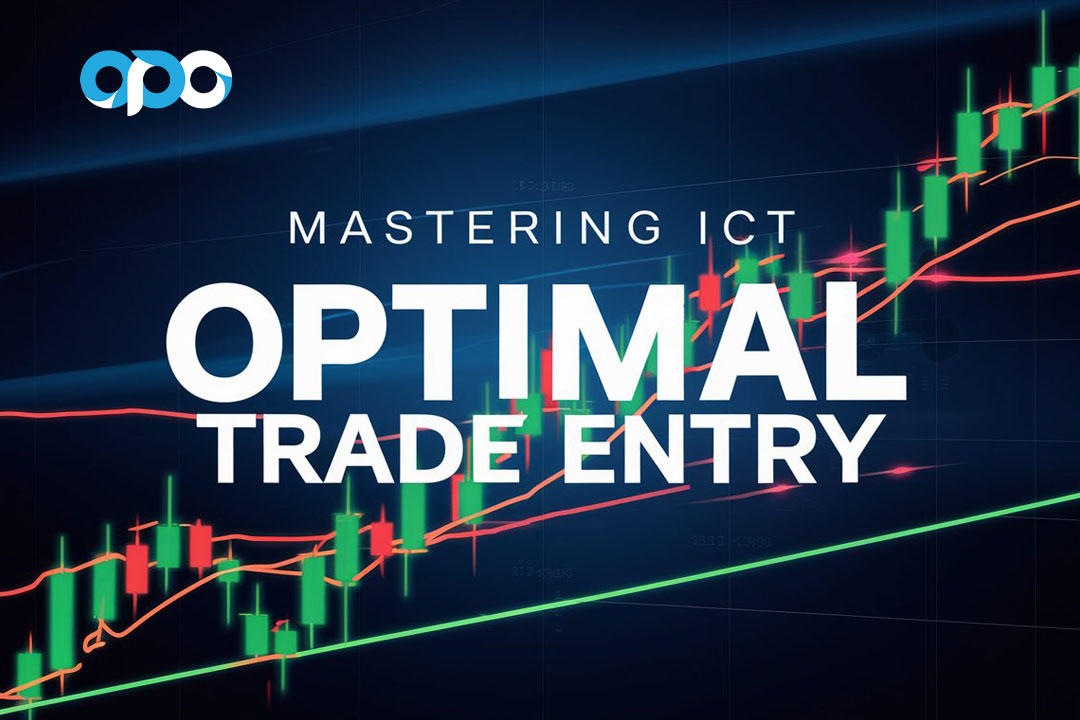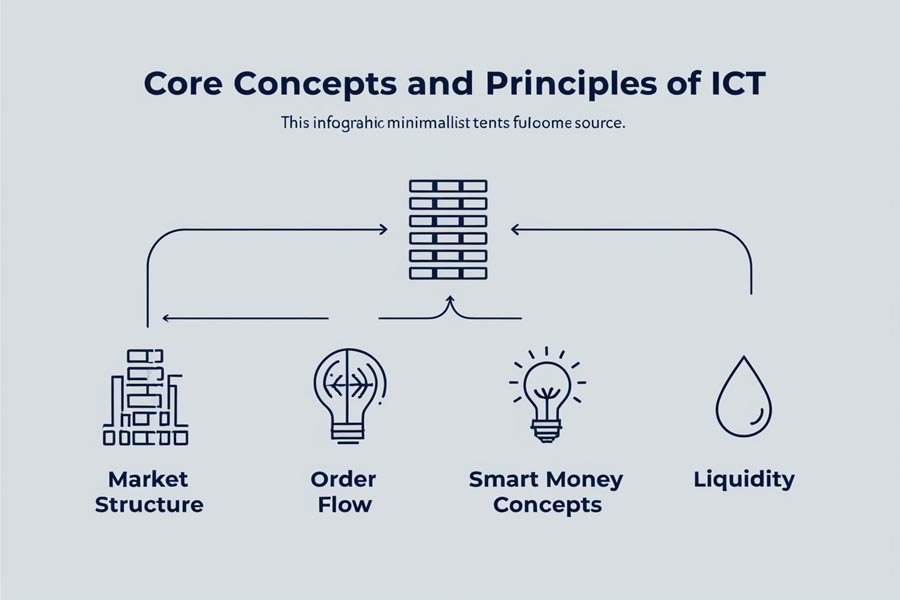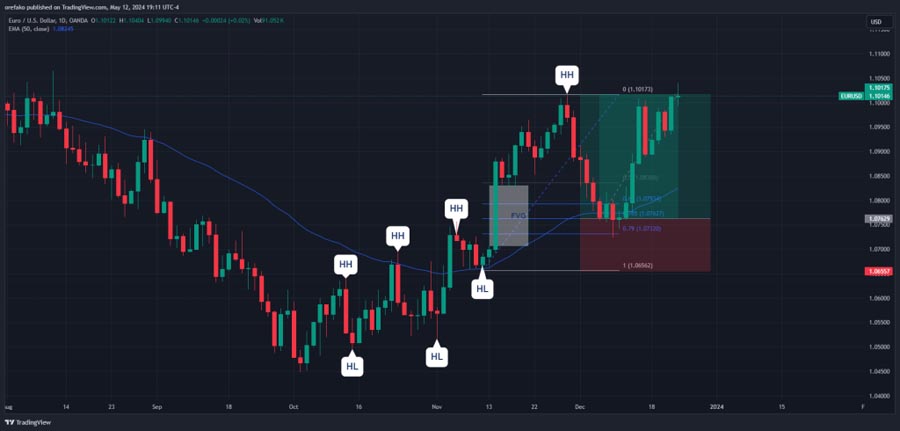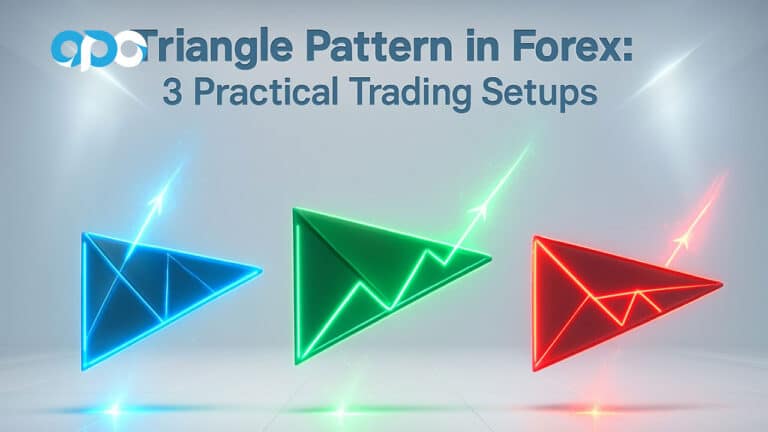In the world of trading, finding the perfect entry point can make all the difference between a profitable trade and a losing one. The ICT Optimal Trade Entry (OTE) is a powerful concept that can significantly enhance your trading performance. ICT OTE is a strategic approach to entering trades within a specific zone that offers the best reward-to-risk ratio, typically found between the 0.62 to 0.79 levels of the Fibonacci retracement tool. This method, developed by the Inner Circle Trader (ICT), combines technical analysis with market structure insights to identify high-probability entry points. In this comprehensive guide, we’ll explore the intricacies of ICT Optimal Trade Entry, providing you with the knowledge and strategies you need to elevate your trading game. For traders looking for professional guidance and tools to implement this strategy, a broker for forex can offer essential support and resources.

Understanding ICT: The Foundation of Smart Trading
Core Concepts and Principles of ICT
Inner Circle Trader (ICT) methodology is built on several key principles:

- Market Structure: Understanding the hierarchical nature of price movements
- Order Flow: Identifying institutional buying and selling pressure
- Smart Money Concepts: Aligning trades with large market participants
- Liquidity: Recognizing areas of high and low liquidity
The ICT approach emphasizes the importance of understanding market dynamics beyond simple technical indicators, focusing on the underlying forces that drive price action.
Relationship Between Market Structure and Price Action
ICT analysis places significant emphasis on market structure:
- Higher Time Frame (HTF) Levels: Identifying key support and resistance areas
- Order Blocks: Recognizing zones of significant institutional activity
- Fair Value Gaps (FVGs): Spotting imbalances in price that often get filled
Understanding these structural elements allows traders to anticipate potential price movements and identify optimal entry points.
Identifying Optimal Trade Entries
What Optimal Trade Entry is About
The Optimal Trade Entry (OTE) is a cornerstone concept in ICT methodology that focuses on finding the most favorable zone to enter a trade. It’s based on the principle that certain price levels offer superior opportunities for trade execution, providing the best balance between potential reward and risk.
Key aspects of OTE:
- Fibonacci-Based: Utilizes the 0.62 to 0.79 Fibonacci retracement levels
- Risk-Reward Optimization: Aims to maximize the potential profit while minimizing risk
- Market Structure Alignment: Considers broader market context and key levels
- Psychological Price Levels: Often aligns with psychologically significant price points
- Institutional Interest: Represents areas where large market participants are likely to engage
The table below illustrates how common Fibonacci retracement and extension levels are utilized in trading:
| Fibonacci Level | Retracement Application | Extension Application |
| 0.236 | Minor retracement level for counter-trend moves | First target level for taking partial profits |
| 0.382 | Shallow retracement, often seen in strong trends | Conservative target for extensions |
| 0.5 | Psychological half-way point for retracements | Mid-point target for price projections |
| 0.618 | The ‘Golden Ratio,’ critical for identifying reversals | Common target in strong trends for profit-taking |
| 0.786 | Deep retracement level indicating potential reversals | Aggressive target for extensions in volatile markets |
| 1.0 | Full retracement, potential for trend reversal | Key level for projecting full moves |
| 1.272 | – | Standard extension target, especially in breakout scenarios |
| 1.618 | – | ‘Golden’ extension level, often the point for trend exhaustion |
How to Identify OTE on Your Chart
To identify the Optimal Trade Entry zone on your chart:
- Identify the Trend: Determine whether the market is in an uptrend or downtrend. Look at higher timeframes to get a clear picture of the overall market direction.
- Find Swing Points: Locate the most recent significant swing high and swing low. These should be clear, obvious turning points in the market.
- Apply Fibonacci Retracement: Draw the Fibonacci retracement tool from the swing low to high (in an uptrend) or high to low (in a downtrend). Most charting platforms have this tool built-in.
- Focus on the OTE Zone: Pay special attention to the area between the 0.62 and 0.79 Fibonacci levels. This is your OTE zone.
- Confirm with Market Structure: Look for additional structural elements that align with the OTE zone, such as previous support/resistance levels, trendlines, or price patterns.
- Volume Analysis: If possible, analyze the volume profile in the OTE zone. High volume nodes within this area can provide additional confirmation.
- Multiple Timeframe Confirmation: Check if the OTE zone aligns with significant levels on higher timeframes for added confluence.
Read more: Mastering the ICT Market Maker Model

This zone represents the optimal area for trade entry, offering the best potential reward relative to the risk taken.
How to Implement OTE in Trades
Implementing OTE in your trading strategy involves several crucial steps:
- Confirm Market Context:
- Analyze the broader market structure to ensure it aligns with your trade idea.
- Identify key support and resistance levels, trend direction, and any relevant fundamental factors.
- Wait for Price to Reach OTE:
- Exercise patience and allow the price to retrace to the OTE zone.
- Avoid the temptation to enter prematurely, even if the trade idea seems compelling.
- Look for Confirmation:
- Seek additional confirmation signals within the OTE zone:
- Candlestick patterns (e.g., pin bars, engulfing patterns)
- Technical indicator divergences
- Volume spikes or divergences
- Order flow signals (if available)
- Seek additional confirmation signals within the OTE zone:
- Set Entry Orders:
- Place limit orders within the OTE zone to automate your entry.
- Consider using a combination of limit and stop orders to catch potential quick moves through the zone.
- Manage Risk:
- Set stop losses below key structural levels for long trades or above for short trades.
- Typically, place stops just beyond the OTE zone (below 0.79 for longs, above 0.62 for shorts).
- Define Take Profit Levels:
- Set multiple take profit targets based on key resistance (for longs) or support (for shorts) levels.
- Consider using Fibonacci extension levels or previous swing points for target placement.
- Plan for Trade Management:
- Decide in advance how you’ll manage the trade once it’s active:
- Will you trail your stop loss?
- At what point will you move to breakeven?
- Do you plan to scale out of the position?
- Decide in advance how you’ll manage the trade once it’s active:
- Document Your Process:
- Keep a detailed trade journal documenting your OTE trades.
- Record your reasoning, entry and exit points, and any lessons learned.
- Review and Refine:
- Regularly review your OTE trades to identify patterns and areas for improvement.
- Be willing to adjust your approach based on market conditions and your results.
Combining the OTE With Other ICT Concepts
To enhance the effectiveness of OTE and create high-probability trade setups, consider integrating it with other ICT concepts:
- Order Blocks:
- Look for OTE zones that align with significant order blocks.
- Order blocks represent areas of strong institutional interest and can provide additional confirmation for your OTE trades.
- Enter trades when price returns to an order block within the OTE zone.
- Fair Value Gaps (FVGs):
- Identify OTE zones near unfilled fair value gaps.
- FVGs often act as magnets for price, making them excellent targets for trade entry.
- Combine OTE with FVG analysis for potentially higher-probability setups.
- Liquidity Pools:
- Consider OTE zones near areas of high liquidity.
- Liquidity pools often attract price and can lead to significant moves once breached.
- Look for OTE setups that coincide with untapped liquidity pools for potential breakout trades.
- Breaker Blocks:
- Identify OTE zones that align with breaker blocks (former support/resistance levels that have been broken).
- These areas often lead to strong continuation moves when retested.
- Enter trades when price returns to a breaker block within the OTE zone.
- Market Structure Shifts:
- Use OTE in conjunction with market structure analysis to identify potential trend reversals or continuations.
- Look for OTE setups that occur after a change in market structure (e.g., break of trend, higher high/lower low).
- Smart Money Concepts (SMC):
- Incorporate SMC principles like inducement, trap, and stop hunts into your OTE analysis.
- Look for OTE setups that occur after potential stop hunts or at key SMC levels.
- Institutional Candles:
- Identify large, decisive candles that indicate significant institutional activity.
- Look for OTE setups that align with the range of these institutional candles.
- Multi-Timeframe Analysis:
- Use higher timeframes to identify key structural levels and overall trend direction.
- Apply OTE on an intermediate timeframe for trade setup.
- Use lower timeframes for precise entry and exit execution.
Risk Management and Psychology in OTE Trading
Effective Risk Management Strategies
Implementing robust risk management is crucial for long-term success with OTE:
- Position Sizing: Calculate position sizes based on account risk tolerance, typically risking no more than 1-2% per trade
- Stop Loss Placement: Use the OTE zone boundaries for stop loss placement
- Risk-Reward Ratio: Aim for trades with at least 1:2 risk-reward, preferably higher
- Partial Profit Taking: Consider scaling out of positions at key levels to lock in profits
Read more: Mastering the ICT Asian Range Strategy
Psychological Aspects of OTE Trading
Mastering the psychological aspects of trading is as important as technical skill:
- Patience: Wait for price to reach the OTE zone rather than forcing trades
- Discipline: Stick to your OTE-based trading plan and avoid impulsive decisions
- Emotional Control: Manage fear and greed by focusing on the process over outcomes
- Continuous Learning: Embrace a growth mindset and learn from both successful and unsuccessful OTE trades
OpoFinance Services: Elevate Your OTE Trading Experience
As you embark on your journey to master ICT Optimal Trade Entry, consider partnering with a reliable and regulated broker like OpoFinance. As an ASIC-regulated broker, OpoFinance offers a secure and transparent trading environment, ensuring that your funds and trades are protected by stringent regulatory standards.

OpoFinance stands out with its innovative social trading service, which allows traders to connect, share strategies, and even copy trades from successful investors. This feature is particularly valuable for those looking to refine their OTE skills, as it provides insights into how experienced traders implement these strategies in real-time market conditions.
By choosing OpoFinance, you gain access to:
- A wide range of tradable assets
- Competitive spreads and low commissions
- Advanced trading platforms with powerful analytical tools
- Comprehensive educational resources to support your trading journey
- Dedicated customer support to address your trading needs
Whether you’re just starting with ICT Optimal Trade Entry or looking to take your skills to the next level, OpoFinance provides the tools, resources, and community support to help you succeed in the dynamic world of trading.
Read more: Decoding SMT Divergence
Conclusion
Mastering ICT Optimal Trade Entry is a game-changer for traders seeking to enhance their performance and consistency. By focusing on the specific zone between the 0.62 and 0.79 Fibonacci retracement levels, you can identify high-probability trade opportunities with precision. Remember, successful implementation of OTE requires patience, discipline, and continuous learning.

As you incorporate these strategies into your trading approach, focus on developing a deep understanding of market dynamics and refining your ability to read price action within the OTE zone. With practice and persistence, ICT Optimal Trade Entry can become a powerful tool in your trading arsenal, helping you navigate the markets with greater confidence and success.
How does ICT Optimal Trade Entry differ from traditional Fibonacci retracement trading?
While ICT Optimal Trade Entry uses Fibonacci retracement levels, it specifically focuses on the 0.62 to 0.79 zone as the optimal entry area. Traditional Fibonacci retracement trading often considers multiple levels (e.g., 0.38, 0.50, 0.618) without necessarily prioritizing a specific zone. ICT OTE combines this focused Fibonacci approach with a deeper understanding of market structure and order flow, potentially leading to more precise and higher-probability trade entries.
Can ICT Optimal Trade Entry be applied to all financial markets and timeframes?
Yes, ICT Optimal Trade Entry principles can be applied to various financial markets, including forex, stocks, commodities, and cryptocurrencies, across different timeframes. However, it’s important to note that the effectiveness may vary depending on the market’s liquidity and volatility. Highly liquid markets and higher timeframes often provide clearer OTE setups due to reduced noise. Traders should adapt their approach based on the specific characteristics of each market and timeframe they trade.
How can I improve my success rate with ICT Optimal Trade Entry?
Improving your success rate with ICT Optimal Trade Entry involves several key practices:
Practice identifying OTE zones on historical charts to develop pattern recognition skills
Combine OTE with other technical and fundamental analysis techniques for confirmation
Maintain a trading journal to track and analyze your OTE trades
Focus on high-quality setups that align with the broader market structure
Continuously educate yourself on market dynamics and ICT concepts
Use proper risk management techniques to protect your capital
Be patient and disciplined in waiting for price to reach the OTE zone before entering trades
Remember, consistent profitability comes from a combination of technical skill, psychological preparedness, and disciplined execution.







